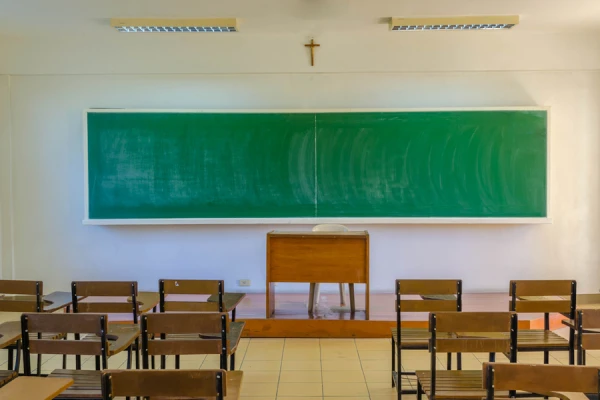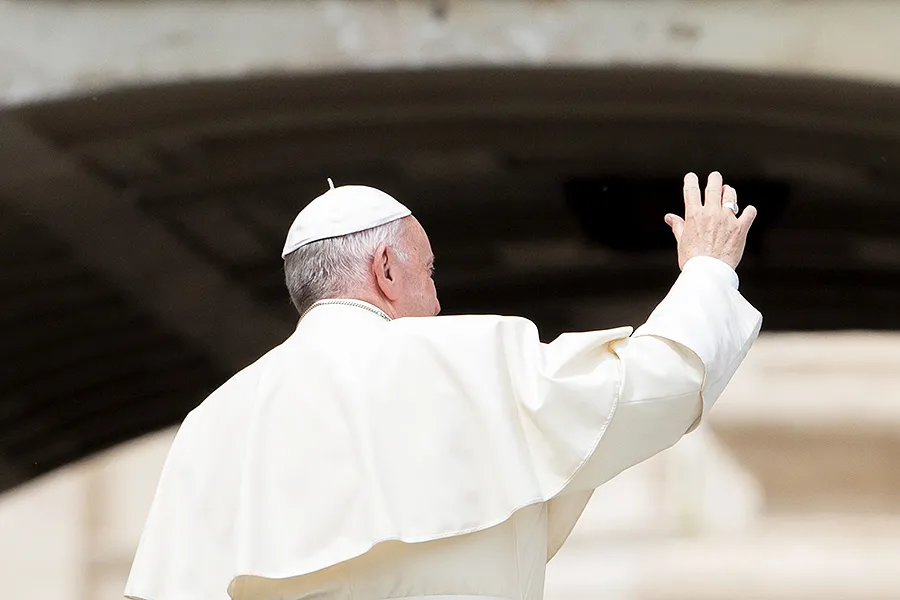
Washington D.C., Feb 10, 2021 / 05:00 pm (CNA).- Catholic schools in the Archdiocese of Boston “followed the science” and have kept its students safe amid the pandemic, the archdiocesan superintendent told CNA on Wednesday.
“I think the Catholic schools, overall, have been vindicated,” said Thomas Carroll, superintendent for the Archdiocese of Boston schools. “A lot of uncharitable things were said when we opened our schools across the country, but it turns out we were right and science was on our side.”
Unlike public schools in the rest of the state, Catholic schools in the archdiocese – the largest district by geographic area and the second-largest school district by population in Massachusetts – opened in the fall for in-person learning.
“When we reopened, I said, my position was not that we’re going to be reopened ‘hell or high water,’” Carroll told CNA. “My position is we’ll be open as long as it’s safe to be open. And we’re literally watching the health data every single day.”
Carroll said that if COVID case numbers were to “spin out of control” once again, he would have no problem closing the schools. “But it didn’t spin out of control,” he said.
At the outset of the pandemic, the archdiocese had actually closed its schools to in-person learning before the public schools had shut their doors.
By the end of the 2020 school year, the archdiocese announced in June that 10% of its schools would close. The closures were due in part to the economic crisis caused by the pandemic, with families unable to make tuition payments, according to WBUR
Projections were grim for the 2020-21 school year. Initially, the archdiocese was looking at a nearly 17% drop in student enrollment.
That all changed on July 15, when state public school teachers’ unions announced a delayed start to the year followed by remote learning. Parents began moving their children into the area Catholic schools.
“So at that moment from July 15th forward to like the third week in October, we gained more than 4,000 students,” Carroll said – a figure that almost entirely made up for the projected drop in enrollment. About 80% of those new students had been previously enrolled at public schools that were no longer meeting in-person.
When Carroll first announced that archdiocesan schools would be opening in-person for the school year, he received a barrage of criticism. Carroll said he was repeatedly asked if he would be attending the funerals of the students who would die of COVID-19.
In fact, he said that out of coronavirus cases in his schools, the vast majority of them have come from the “outside in”—meaning the student was first infected in the community and then brought the illness into the school. The schools themselves were not significant sources of community transmission.
“We have, at the moment, zero active cases of spread,” he said. “We’ve had very few over since inception. We’ve had hundreds of cases since the beginning, but they all cycle out. To my knowledge, nobody’s been hospitalized.”
Unlike in other dioceses, archdiocesan schools have not had to cap student populations due to social distancing measures. In Massachusetts, students are only required to distance about three feet apart from each other – which was essentially the pre-pandemic standard distance between desks.
Carroll credits the strict discipline inherent to Catholic schools for why his district has experienced relatively few cases of COVID.
“The one thing Catholic schools do really well,” he said, “is we get kids to follow instructions.”
“So this whole exercise from a public health perspective is having a reasonable set of rules and getting everybody to follow them religiously. Well, that’s what we do,” he said.
Students wear masks, wash their hands frequently, and stay in cohorts, he explained.
Some of the aging school buildings have large windows that can be opened to improve ventilation. “The fact that we don’t have enough money for nice new buildings has turned out to be a huge asset,” he said.
Despite the district’s large size and student population, Carroll told CNA there have not been differences of spread with regard to the location or demographics of schools. The archdiocese has schools located in both rural and urban communities, as well as in both affluent and disadvantaged areas.
The archdiocese was recently recognized by Gov. Charlie Baker (R) in his State of the Commonwealth address, for safely resuming in-person classes. Carroll said that the low level of infections in his schools helped to sway governmental policy on future school closings.
Initially, when the state-designated geographic areas as “red zones” of community spread, Baker wanted the local schools to shut down automatically.
The archdiocese did not close its schools in the “red zones,” arguing “that the only safe place for the children in a red zone is a school – a school that’s following the (safety) protocols,” Carroll recalled
Carroll said that children in other schools who have had to attend school remotely for months are suffering from it.
“It’s going to be catastrophic for these kids, particularly kids from economically disadvantaged backgrounds, homeless kids, kids with special needs,” he said.
Despite the low infection level in the current school year, he still acknowledges that new variants of the virus could force schools to close again.
“I think people should reflect on that and they should reflect on the much larger number of people that are being stranded now and how all of their leaders have completely ignored science and health data,” he said.
Despite the challenges and new protocols, Carroll said that he was “glad we all got back together,” and that he was “astonished” that things are still going well with in-person learning.
“And we’re grateful because our kids are doing great,” he said.
If you value the news and views Catholic World Report provides, please consider donating to support our efforts. Your contribution will help us continue to make CWR available to all readers worldwide for free, without a subscription. Thank you for your generosity!
Click here for more information on donating to CWR. Click here to sign up for our newsletter.





Thank you for sharing the good news ; concerns about the new variant of the virus potentially being more dangerous for the young and simple measures can be looked into such as use of UV- C light installations and HEPA filters , as free standing air cleaners as well as in the HVAC systems . Good chance of families using the reported beneficial agent Magnesium chloride , if given from schools , as an act of mercy as well as heeding words of the Holy Father , to come up with such helpful measures – being inexpensive , can be given in enough bulk amounts to be used as salt water massage on the body ; same can also help with issues such as hyper activity , poor sleep etc : .
Most Catholic schools likely near churches and The Eucharistic Lord , attending the Holy Mass as well as prayer recitations during the school day – the heart beats of the children and those around rising to The Father , in the Oneness in the Divine Will , to help undo the ingratitude for life , thus the countless blessings from same –
‘Love and glory to You , for every ( new ) heart beat , every breath, granted each of us , in the infinite Goodness in The Divine Will…. ‘
Children in sharing the St . Valentine Day gifts reminded to do such too , as given in the Rounds format , to add its own lasting sweetness all around .. 🙂
https://bookofheaven.org/book-of-praying-the-round/book-of-the-round-ordinary-time-2/